When snow covers the ground, the feeders become the community center for the birds in the area. They have feeding times when activity is high–swooping in, grabbing a seed, flying away. The black-capped chickadees flit to a nearby branch to peck open the seed covering and swallow the seed. The noisy blue jay will pick at his seed in the feeder after scaring all the other birds away. Woodpeckers, like the Red-bellied woodpecker, often carry their food away to store in the cracks and crevices of trees and fence posts for a later time. The ‘Zebraback’, with its barred black and white wings and back, has a creamy buff underside that covers the red patch on the lower abdomen. The female (above) has a red nape and patch at the base of the beak, while the male (below) has a red crown and nape.
It was a bitterly cold day when the male visited the feeder. His feathers were all fluffed up, and he looked like he was wearing a fur coat!
Along with seeds from annuals and perennials, the red-bellied woodpecker also eats wood-boring beetles, grasshoppers, spiders, acorns, pine nuts, and fruit. They have a barbed tongue and sticky saliva that makes it easier to catch their prey.
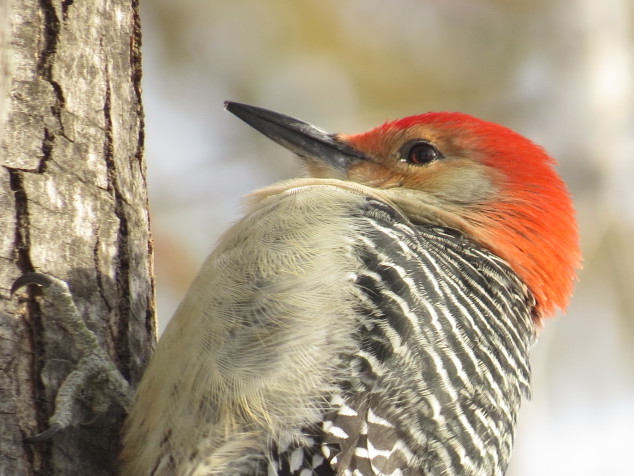 This small Downy woodpecker is another frequent flier to the community feeder. When he flew to the tree, he may have been storing the seed in the crevice of the bark or may have placed it there to hold as he pecked it open.
This small Downy woodpecker is another frequent flier to the community feeder. When he flew to the tree, he may have been storing the seed in the crevice of the bark or may have placed it there to hold as he pecked it open.
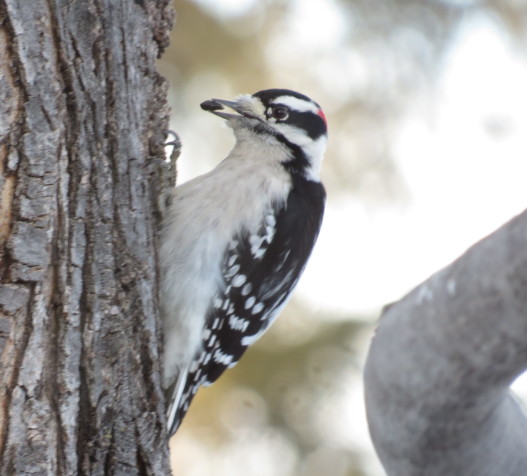 Another tree-clinging bird is the White-breasted nuthatch. It is often seen creeping headfirst down a tree trunk, enabling it to store food in crevices and to find food that right-side up birds might miss.
Another tree-clinging bird is the White-breasted nuthatch. It is often seen creeping headfirst down a tree trunk, enabling it to store food in crevices and to find food that right-side up birds might miss.
But the birds are not the only ones in the community that come to the feeders. The squirrels show off their acrobatic skills by scaling the trees and climbing or jumping to the food source. The new mailbox feeder is becoming the favorite for the little nutkins–it is closer to their oak trees, easier to climb, and has less of a chance that the big black dog will chase them away from it.
Yesterday morning we had more visitors enjoying some black oil sunflower seeds.
There were four in all, and they watched me through the window and got a little nervous about being so close to the house. Their winter coats gave them rounded haunches, thick necks, and jowly faces.
They ate some seeds, then wandered and grazed their way back to the woods
The beautifully feathered birds come to the community feeder in the winter, because it’s all about the food. Each has specialized physiology that enables them to search, find, and eat the food that is best for them. In the snow-covered months of fall and winter, it is hard for the birds and other animals to find sufficient food, so the seed-laden feeders provide an oasis for them. In this week of Thanksgiving and abundant food for most of us, please remember the ones who are having a harder time providing adequate food for their families. Let us all give thanks for our blessings and bless the givers who provide an oasis for those in need.
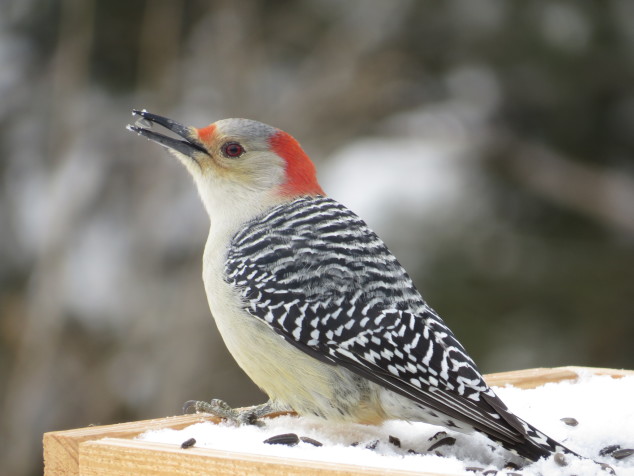
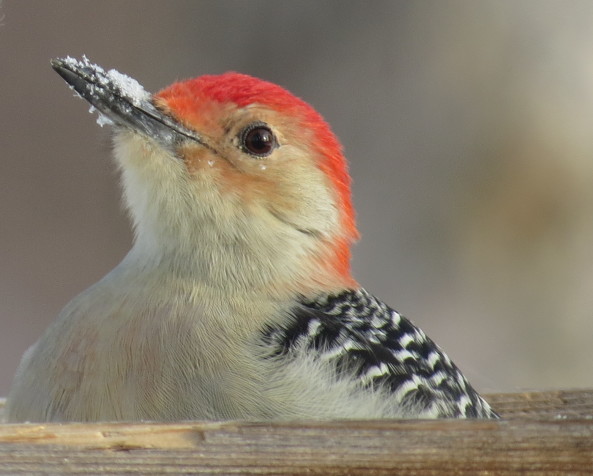
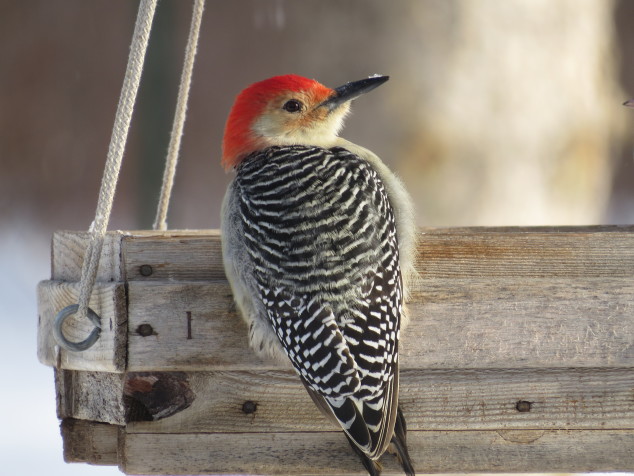
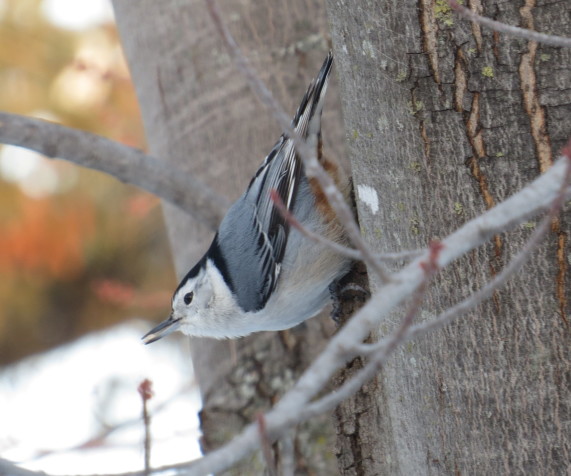
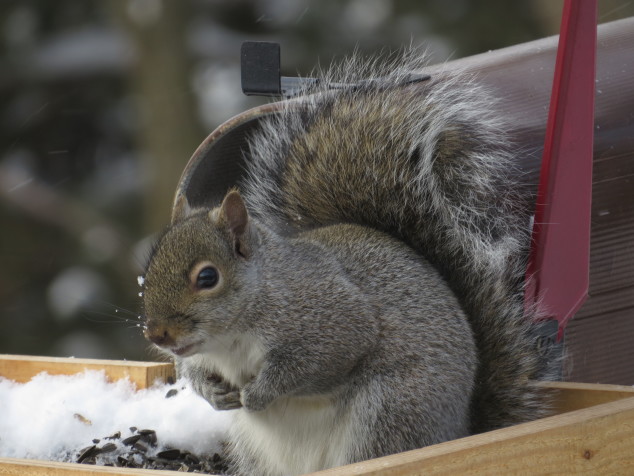
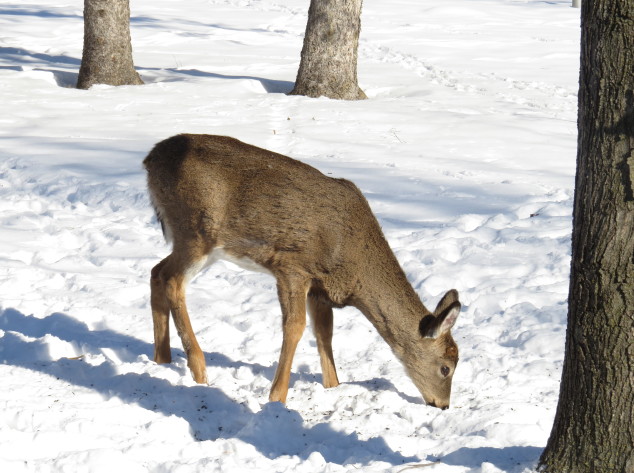
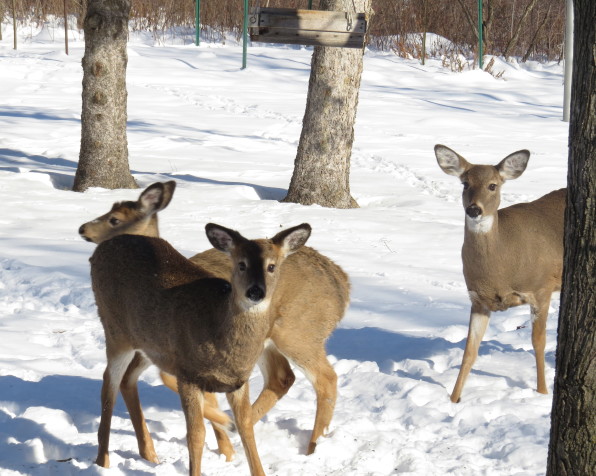
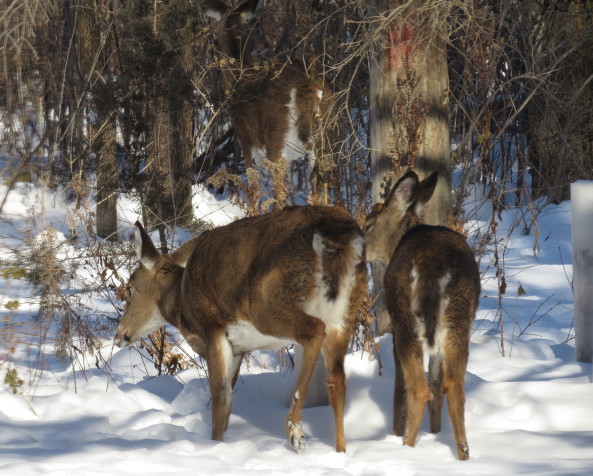
Leave a Reply